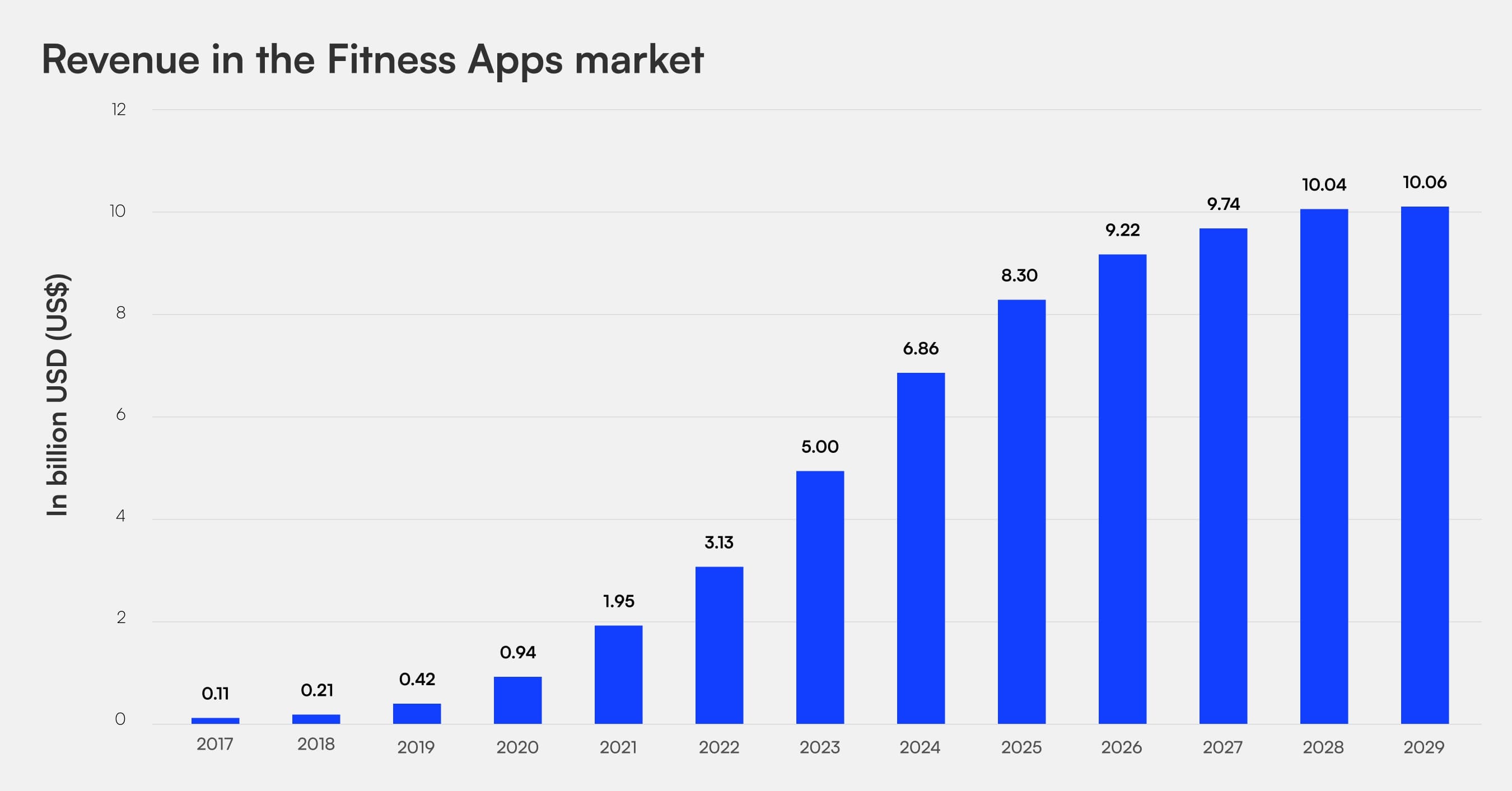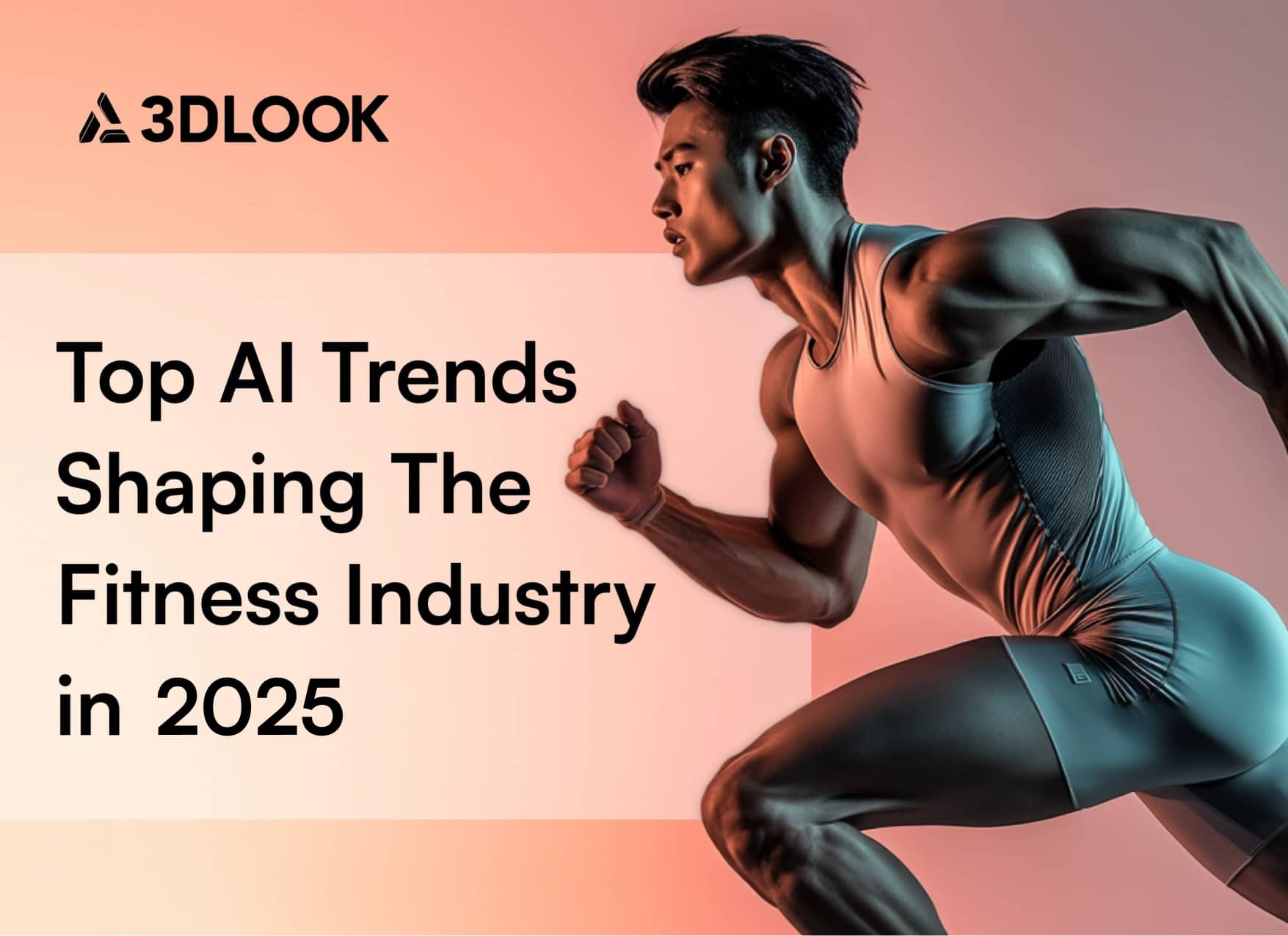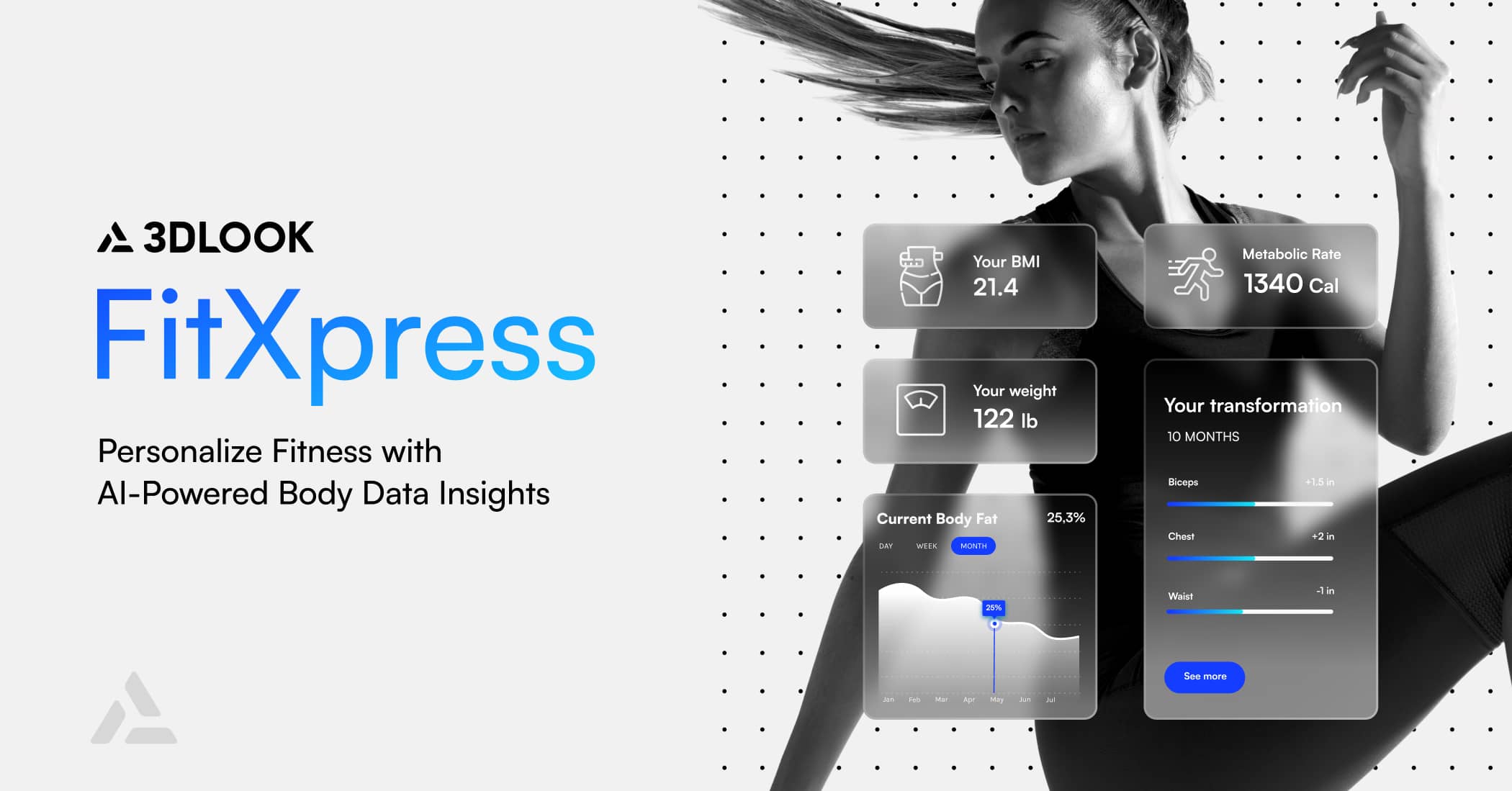Artificial intelligence has made it possible to turn your living room into a personal smart gym, where your favorite fitness coach can provide personalized feedback on your workout progress—all from the comfort of your home.
It’s no secret that AI fitness apps have become increasingly popular among health enthusiasts. The expansion is fueled by the growing interest in fitness and wellness pursuits, the widespread adoption of smartphones, and the demand for instant access to fitness data. Future projections suggest that AI will bring VR and AR exercise experiences, genetic analysis, and injury prevention to the forefront of fitness solutions.
Introduction
We’re currently witnessing a digital fitness revolution as the use of digital fitness tools has skyrocketed, experiencing a growth of more than 30% since 2021. Additionally, the revenue of fitness apps is anticipated to grow at a compound annual growth rate (CAGR) of 7.96% from 2024 to 2029, leading to an estimated market size of $10.06 billion by 2029.

From offering tailored recommendations on when to rest and train to helping athletes optimize performance, AI has made fitness more efficient, personalized, and accessible. This technology has not only transformed the way people approach health and wellness but has also provided innovative solutions for businesses. AI is a great asset for fitness companies and personal trainers, helping consumers actively track their workout, wellness, or weight management progress.
Yet, some AI fitness apps go further and perform valid genetic testing and DNA analysis, revealing users’ distinct health characteristics and susceptibility to injuries. This trend, along with a holistic approach to health and wellness, will likely dominate future AI fitness apps.
Here’s a rundown of the current and future trends of AI technology in the fitness industry.
An Overview of AI in the Fitness Industry Today
One of the most significant applications of AI in fitness is the creation of personalized workout plans. AI algorithms can analyze a user’s data, like age, weight, fitness level, and goals, to develop tailored exercise routines that optimize results.
Cardio and workout apps currently lead the fitness app market, though health-tracking apps are becoming more prevalent. Apps focused on workouts and weight loss make up 73% of all sessions in health and fitness applications.
For instance, FitXpress uses AI-driven body scan technology to capture accurate 3D body data, thus providing valuable insights that empower users to maximize their health and fitness potential.
Some standout features include smart scales, detailed body shape analysis, fat percentage measurement, body proportions, metabolic rate assessment, obesity evaluation (BMI), and fitness tracking with results benchmarking. FitXpress works like an AI-powered tool for body transformation. Fitness users can rely on body scan results to compare their current body proportions to past scans, so it’s easier to spot subtle changes in body shape over time and stay motivated.
Yet, the way people regard and define fitness today isn’t just about workouts and staying fit. As a recent Statista report mentions, health and fitness apps have been evolving in numerous ways, including public health and building communities for fitness enthusiasts with similar interests.
Examples of AI-Driven Fitness Apps and Their Capabilities
Designing personalized training programs and providing detailed feedback are the main capabilities that AI offers. AI-powered virtual personal trainers provide users with real-time feedback on their form and technique, enhancing the quality of workouts and reducing the risk of injury. These virtual trainers simulate the experience of having a personal coach, making high-quality fitness guidance more accessible and affordable.

In addition to workout optimization, AI is also used to provide personalized nutrition advice. AI algorithms can analyze individual data like dietary preferences, allergies, and fitness goals, and create customized meal plans that complement the user’s fitness routine.
One example is FitGenie app that uses AI to offer tailored meal plans and grocery lists based on a user’s unique dietary needs and fitness objectives. The app’s AI continuously learns from user feedback and adjusts its recommendations to align with changing goals and preferences, ensuring that nutrition plans always align with fitness goals.
Moreover, the increasingly popular wearable fitness devices, like smartwatches and fitness trackers, use AI to monitor various health metrics like heart rate, sleep patterns, and activity levels.
For example, Whoop uses AI to analyze physiological data and provide insights into a user’s recovery, strain, and sleep quality. The device offers personalized recommendations on when to rest, train, or modify workouts based on the user’s readiness and recovery status, helping athletes improve performance.
Other apps like Alter.me craft tailored programs grounded in users’ genetics. Alter.me kicks off with a DNA test to reveal essential traits that shape people’s approach to fitness, health, and well-being. This helps the app design personalized workout routines, nutrition plans, and wellness strategies that align perfectly with each individual’s unique DNA.
Additionally, top AI fitness platforms offer innovative solutions and address different aspects of fitness.
Take Spurfit, an AI-powered fitness platform that uses machine learning algorithms to analyze user data, such as fitness goals, body metrics, and workout preferences. For example, if a user consistently excels in cardio but struggles with strength training, Spurfit adjusts the workout regimen to balance the two, ensuring a well-rounded fitness routine.
Using a different approach, Kemptai specializes in fitness analytics and motion tracking. This AI-driven platform relies on advanced computer vision technology to analyze a user’s form during exercises. Kemptai’s AI algorithms can detect improper form or posture and suggest corrections, reducing the risk of injury and enhancing the effectiveness of workouts.
Asensei.ai is also packed with unique features that aim to elevate the workout experience. Asensei uses 3D motion capture technology to monitor movements and offers immediate feedback on a user’s form and technique. Asensei.ai can also design personalized, multi-week training programs based on specific fitness goals, whether users are preparing for a competition or just aiming to enhance their overall fitness.
The app effortlessly syncs with Bluetooth-compatible rowing machines like Concept2, WaterRower, and FluidRower, allowing it to track important workout metrics such as stroke rate and split times to provide detailed performance insights.
The key benefit for users is that their exercises are performed correctly, improving both safety and effectiveness. Additionally, the app’s interactive features and progress monitoring keep fitness enthusiasts engaged and motivated to stick with their workout regimen.
The Use of AI in Fitness Apps

All in all, fitness apps and platforms of today cover these use cases:
- Custom workout programs that align with users’ specific goals, preferences, and fitness levels, including options for strength training, cardiovascular workouts, flexibility, and recovery routines.
- Training for mental toughness and mindfulness exercises aimed at improving focus, managing stress, and promoting emotional health.
- Guidance on nutrition and meal planning resources to assist users in meeting their dietary objectives and providing the necessary energy for optimal workout performance and recovery.
- Dedicated training exercises that help users lose weight, build muscle, and improve endurance, with or without virtual coaching and support.
- Genetic testing and DNA analysis that are based on identifying each user’s unique health characteristics, such as metabolic rate, nutrient absorption, response to exercise, and potential injury risks.
- Tailored recommendations for exercise regimens, nutrition planning, sleep optimization, stress management, and supplementation based on individual genetic profiles.
- Community features: options for connecting with others who share similar interests, celebrating achievements, and engaging in challenges for additional motivation.
- Interactive workout sessions in the form of virtual coaching: live classes led by certified trainers, providing guidance, motivation, and support throughout each exercise session.
Current Challenges and Limitations of AI Tools for Fitness
Data Privacy and Security Concerns
One of the primary challenges in using AI tools for fitness is ensuring data privacy and security. AI fitness apps and wearables collect numerous personal data, including biometric information, workout history, and health metrics. An increasing number of people have become more privacy-oriented and are concerned about how this data is stored, shared, and protected.
AI fitness apps can overcome data privacy and security concerns by adopting strong encryption methods to protect user data during transmission and storage. Additionally, these apps should have clear, transparent data privacy policies that inform users about what data is collected and how it’s used. Regular audits and compliance with data protection regulations like GDPR and CCPA can also help build trust with users.
At 3DLOOK, all apps and solutions, including FitXpress, follow all GDPR guidelines, ensuring that customers feel safe and protected in both the EU and the US. Additionally, we use end-to-end encryption to secure every photo and its associated metadata with distinct, randomly generated encryption keys. Files can only be accessed using the user’s unique decryption key.
Request a demo of FitXpressAccuracy and Reliability of AI Algorithms
AI tools in fitness rely heavily on data and algorithms to provide accurate recommendations and insights. However, the accuracy of these algorithms can vary significantly depending on the quality and diversity of the data used to train them. Sometimes, AI models may not account for the vast range of body types or specific health or medical conditions, leading to generalized or misleading advice.
A workaround for this challenge is for fitness apps to use diverse datasets that include a wide range of body types, fitness levels, ages, and health conditions. Regular updates and continuous learning models can help refine algorithms based on new data, ensuring that recommendations remain relevant and accurate for all users.
Ethical Considerations and Bias
Some AI fitness apps are primarily trained on data from young, healthy individuals, which may not adequately serve older adults or people with disabilities.
Ethical considerations also extend to the ways AI solutions encourage or incentivize behavior. Fitness apps that push users to achieve specific body metrics or weight goals might inadvertently promote unhealthy habits or body image issues.
A proper solution would be to implement guidelines that prioritize users’ overall well-being, promoting healthy behaviors rather than specific body metrics.
Technical Limitations and Accessibility Issues
The effectiveness of AI-powered tools in fitness often depends on advanced technology like high-quality sensors and continuous internet connectivity, which may not be accessible to everyone. Users in remote areas or those who cannot afford the latest devices may find it challenging to benefit from AI fitness solutions.
AI fitness apps can overcome technical limitations and accessibility issues by designing features that work well even in low-bandwidth environments or offline. Offering downloadable workouts, offline tracking capabilities, and simplified app versions can make it more accessible to users with limited internet access or older devices.

How Will AI Most Likely Influence Fitness in The Future
As technology continues to evolve, the role of AI in the fitness industry is expected to expand even further. Some of the latest reports show that the global market for AI fitness apps is expected to surpass $23.98 billion by 2026, with chatbots significantly contributing to this expansion.
AI-powered chatbots provide users with a cost-effective and easily accessible alternative for fitness guidance. Leveraging natural language processing (NLP), these chatbots deliver personalized recommendations, answer questions, and provide instant suggestions, making fitness coaching more convenient for everyone.
Future of Fitness Technology
Other key trends and developments will likely include:
Next level of customized fitness programs
AI will likely make fitness plans even more personalized by continuously adapting to an individual’s progress and feedback, ensuring they remain effective and relevant over time.
For instance, AI technology could be able to create hyper-personalized workout and nutrition plans based on genetic information, lifestyle factors, and real-time health data after analyzing each individual’s unique fitness levels and other important metrics.
Immersive VR and AR workouts
The future of fitness is becoming more immersive with the growing use of virtual and augmented reality. AI will enhance these experiences by offering real-time feedback and adjustments during virtual workouts. This technology makes workouts more engaging and ensures they are highly effective by adapting to the user’s performance.
One prediction is that AI-powered VR and AR fitness games will become more sophisticated, offering interactive and gamified workout experiences that combine entertainment with exercise.

Advanced AI-enabled wearables
Wearable technology is getting a significant upgrade with AI integration. These connected smart devices and fitness apps will go beyond just tracking steps or calories; they will provide deep insights into recovery, stress levels, and overall well-being. By interpreting this data, AI will offer practical advice to help users optimize their health and fitness routines.
AI technology for smart home gyms
Smart home gyms are on the rise, equipped with AI-powered equipment and virtual trainers. These systems bring the quality of a professional gym to the comfort of your home, offering personalized coaching and real-time adjustments to workouts. They monitor performance and adapt routines to keep workouts challenging and effective.
Future gym equipment will use AI to detect fatigue levels, suggest rest periods, and recommend specific exercises to prevent injuries and optimize performance.
Focus on mental health and wellness
AI will also have a significant impact on mental health within fitness routines. AI technologies will initially track stress and emotional well-being, and then recommend mindfulness practices, breathing exercises, and other activities that promote mental health alongside physical fitness, offering a more holistic approach to wellness.
Final Thoughts
Current AI tools in health and fitness are intuitive, convenient, and accessible (including financially) to most people.
Anyone interested in staying fit can forget about the high costs associated with gym memberships. AI tools and fitness apps can create customized plans for people who can’t afford gym memberships or access personal trainers. That’s why the fitness business is thriving in a worldwide market that’s expected to hit $30.56 billion by 2030, with an estimated annual growth rate of 20.5% starting in 2023.
The potential for AI to further transform the fitness industry is vast, promising even more innovative solutions in the years to come. What the AI fitness industry is currently missing are dedicated programs for elderly patients or people with chronic medical conditions. The next step in AI algorithms research could be to improve the program by customizing its features and content to meet the specific needs of these specific user groups. Until then, AI will continue to shape the fitness industry, with a focus on hyper-personalization of health and wellness.
Further reading:
Top Fitness Tech Companies To Watch in 2025



